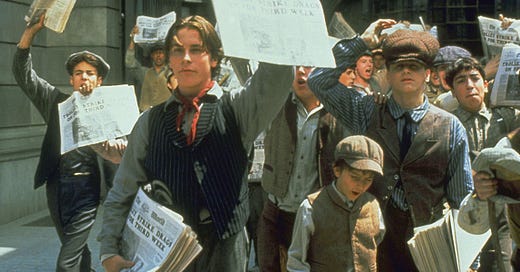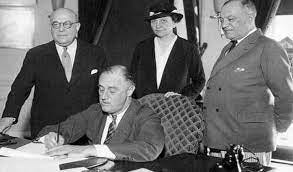Welcome to Second Rough Draft, a newsletter about journalism in our time, how it (often its business) is evolving, and the challenges it faces.
Last month, much of the staff of the New York Times walked off the job for a day. If, like me, you are a regular Times reader, you probably hardly noticed: it wasn’t a very busy news day, the union provided a lot of warning so some stories could be stockpiled, managers filled most of the gaps, and there was reason for confidence the action would end after 24 hours. The point was, I think, to send a message internally: that the union could get the staff to strike. In the weeks ahead, the Times will either finally—22 months after expiration of the last contract—reach a labor agreement or a truly crippling strike of uncertain duration will ensue.
I’m not close enough to the situation to adjudicate the dispute at the Times—and, given the unique posture of the paper’s business, the implications, even if I could, may not be much broader. But this does seem like an appropriate occasion to look more expansively at what unions mean, and do not mean, in newsrooms these days. That’s the subject of this week’s newsletter.
What unions can accomplish
At for-profit companies that actually make substantial profits, unions are essential vehicles for getting a fair share of the aggregate profits for the employee group as a whole. That may seem like a self-evident sentence, but it bears careful parsing.
First, profits can only be divided when there are profits to divide. Thus, the dynamics are dramatically different when companies are no longer profitable, or when, as in the public sector or at nonprofits, there are not profits in the first place. The objectives of unions in such environments are necessarily different, and, to be candid, somewhat diminished, especially because management may also have less influence on revenues in the public and nonprofit sectors.
Next, unions can achieve gains for a workforce as a whole, but they are not designed to maximize returns to those who have unique talents, the workers in a best position to bargain for themselves as individuals. So there is a tension in any union in a creative enterprise: many of the most outstanding (and likely best-known) workers get little personally out of collective action, but need somehow to be induced to participate for the benefit of colleagues whose work is more interchangeable. There is an important interplay between this factor and prevailing ethics. When selfishness is celebrated (think “the Me Decade”), unions will suffer; when collective responsibility is ascendant, as it may now be generationally, unions will tend to revive.
When management genuinely cares for the workforce, unions are less necessary; conversely, when management behaves callously or arbitrarily, unions can act as a counterweight.
For newsroom leaders anxious, as many are today, to forestall the spread of unionization, the practical implications are clear. The more you both attend to your colleagues, and appear to do so, the less union pressure you are likely to face. This means not only market wages, but also competitive benefits, not only humane and equitable policies and practices but also transparency about them. It also likely means a prevailing modesty in the tone of management itself. Elon Musk at Twitter (and perhaps beyond) is probably as good an advertisement for the harm that can come from the absence of a union as can be imagined.
Why unions aren’t a panacea
The previous paragraph notes that many newsroom leaders these days are seeking to forestall or limit unions. If they are themselves behaving decently, why? What do they have to fear? Here, we need to be equally candid about what unions can’t accomplish as about what they can. To begin again with profits, in crumbling companies, unions may haggle over the crumbs, but have little ability to stem decline. Where outlets (whether for-profit or nonprofit) are perched precariously, the example of DNAinfo, which was shut down five years ago after a vote to unionize, should be borne in mind: unions cannot compel investors to invest.
Nor is unionization cost-free. Unions require dues to pay staff and, if they want to pose realistic strike threats, to build up strike funds. There are also costs of other sorts. Collective bargaining takes time—time which, inevitably, reduces the productivity, with respect to the company’s products and services, of both workers and management.
Unions guard against arbitrary behavior; they also make the exercise of what remain management prerogatives—such as legitimate firing of particular individuals for cause—more cumbersome and therefore costly. In addition, and especially where a lack of profits make economic issues harder to address, contemporary unions may be tempted to seek to bargain on matters the law reserves to management, which can be frustrating all around.
I hope the above is truly what Fox News only mockingly claims, “fair and balanced.” I have worked, at the Wall Street Journal, as a manager in a unionized environment (albeit with an independent, that is unaffiliated, union) and found it made the workplace more responsible. I regard the National Labor Relations Act as one of the great achievements of the New Deal. I abhor imperial CEOs.
At the same time, I spent 30 years of my career as a manager, and much of both this newsletter and my consulting practice is devoted to helping others manage. Most of all, I think I see pretty clearly how hard it is these days to build and sustain successful newsrooms, and favor most anything that aids that effort, while worrying about anything that doesn’t. I feel both ways about newsroom unions.





As instigator of a successful newsroom union drive (Newsday 1973-75) and first elected leader of that union (1975-79) I can add some perspective to this analyze. I’ll limit myself to three concise thoughts.
First, I would substitute “expenses” for “profits.” Labor cost is a major element of any news organization’s operation — probably even more so now than when presses and delivery tricks were involved —and collective bargaining is about giving employees a role in making sure basic investment in staffing is smart and equitable.
Second, what management sees as a cumbersome obstacle to discipline and termination unions call due process. I just about sacrificed my career to start a union — managers do no favors for those who organize one on their watch — and as proud as I am of the wage gains we made I was prouder still of interceding to save the jobs of two staffers who went on to complete productive careers.
Finally negotiations are, or at least should be, about establishing fair minimum wages and conditions of employment, not preventing management from rewarding what it sees as outstanding work or spending what is required to compete for exceptional talent. So long as all beat reporters and copy editors were treated fairly it did not bother me one whit that Murray Kempton was paid well above scale.
Arbitrary behavior includes more than arbitrary firings, or wage/salary/benefits issues in general. Especially as many newsrooms are still very White and tilt a fair amount male, even as diversity initiatives grow in the workplace in general, there's other reasons to unionize (and not just in newspapers). And, for editorial staff, it's not big, but of course, with folks like pressmen, there's workplace safety issues.
Media ethics issue may be another issue for editorial staff that gets connected to unionizing.